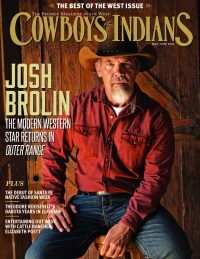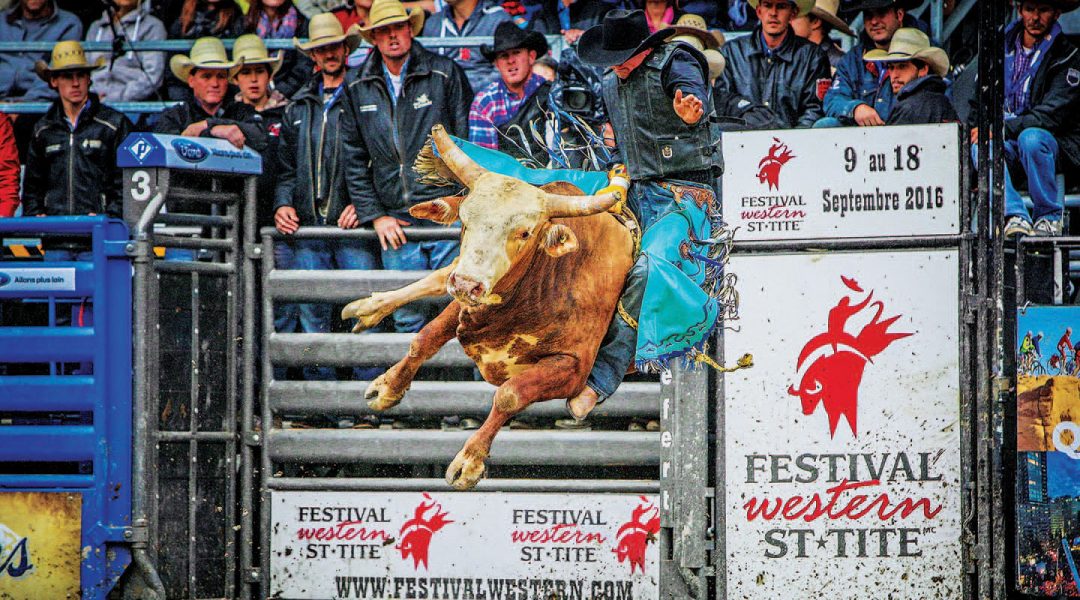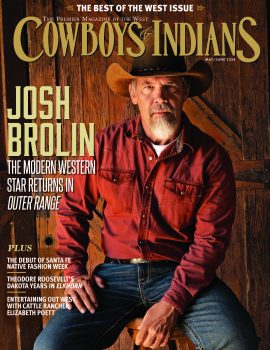Build a vacation around some of the best Western events.
We searched the country — and Canada — to find four events that combine excitement and adventure with the beauty of West.
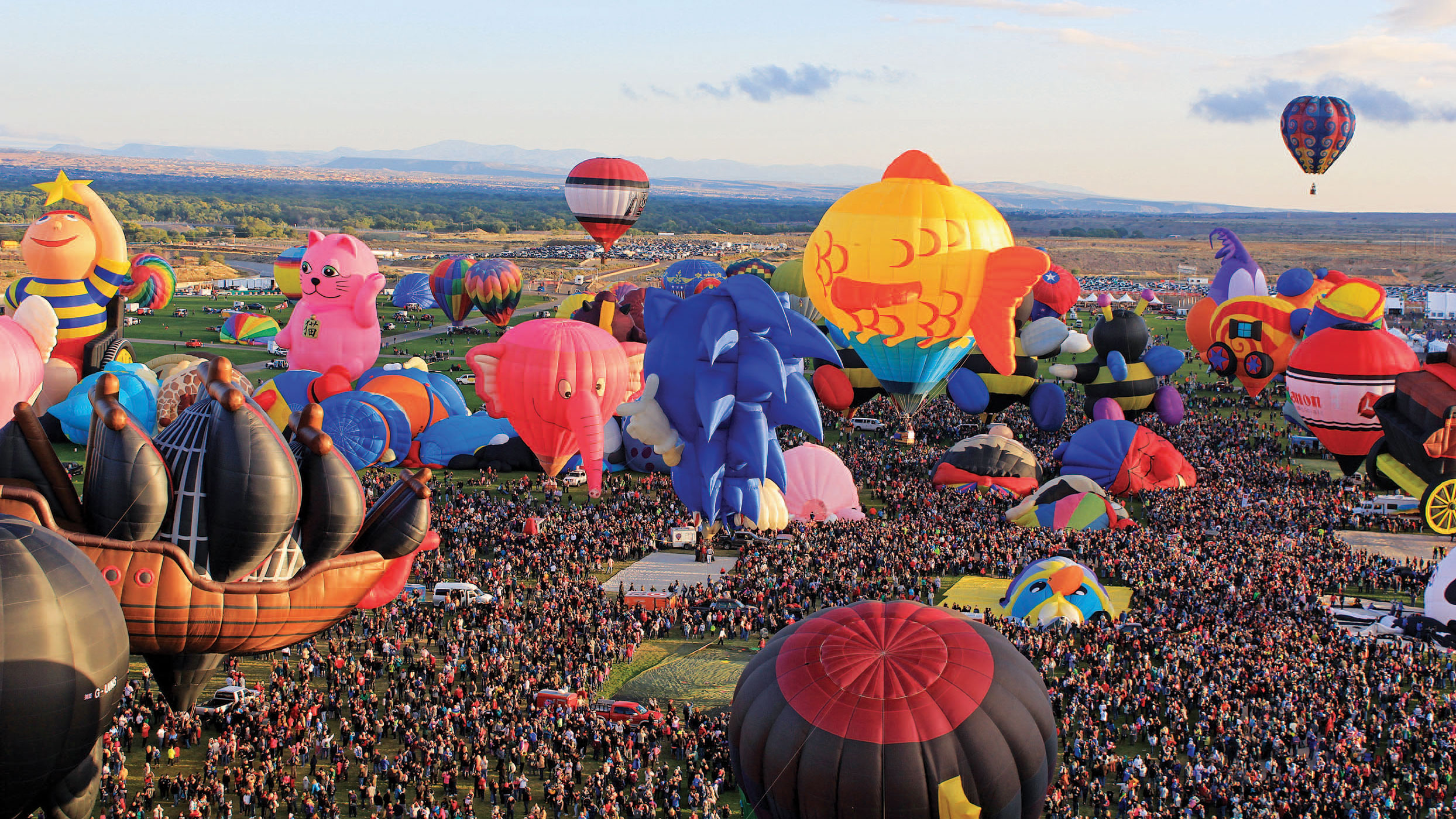
Sail Up, Up, and Away in a Beautiful Balloon
Albuquerque International Hot Air Balloon Fiesta (October 1–9, 2016), Albuquerque, New Mexico
A college friend and I used to talk about someday going for a hot air balloon ride at the Albuquerque International Hot Air Balloon Fiesta, the largest balloon festival in the world. Rather than let that dream fade when I graduated, I added it to my bucket list. So when the day finally came to climb in the basket, you could say I was a little bit excited for my 3 a.m. alarm.
From the moment I arrived at Balloon Fiesta Park, my adrenaline was pumping. In the dark of the early morning, hundreds of attendees had already arrived and were queuing up for hot coffee and balloon rides. The smell of breakfast burritos and percolating anticipation wafted past the concession area onto the launch field, where families and tour groups were starting to gather. And then, seemingly in unison, nearly everyone stopped in their tracks and looked up.
The Dawn Patrol had just launched, and from my spot on the west edge of the field, I could see the three hot air balloons drift ever higher as they checked wind speeds and landing sites. The sun was slowly rising behind the Sandia Crest, creating a photo-worthy Western silhouette, and every so often the balloons would light up to a soft glow.
Less than an hour later, as the sun made its final push over the mountains and the crowds consumed every open inch of grass, it was clear that the three balloons were just a preview of what we were about to witness: the mass ascension. All over the field, crews were laying out tarps, using fans to direct hot air, tethering baskets, and preparing for flight. I looked to my right: Two balloons were launching with a third already above them. To my left, four more had just taken off. Straight ahead, rows and rows of balloons were inflated, waiting their turn. By 8 a.m., the sky looked as though someone had fired a confetti cannon.
The next morning, it was my turn. My inner college-aged self let out a squeal of nervous excitement as I approached my balloon. At first I was intimidated by the tight space in the basket and the lack of a harness, but, once we took off, I left those worries on the ground. As we floated higher, I relaxed in the peace and quiet of the open air. It was just my pilot, a member of his team, and me. We passed over a highway, an empty schoolyard, and an office building with spectators waving hello from the roof, and then brushed through treetops before landing in an open field where our chase crew was waiting. Once back at the festival grounds, we kept with tradition and toasted to a successful flight and landing with a glass of champagne. I had just experienced the magic of thermodynamics, and my college joke was no longer just a dream.
— Victoria Mechler
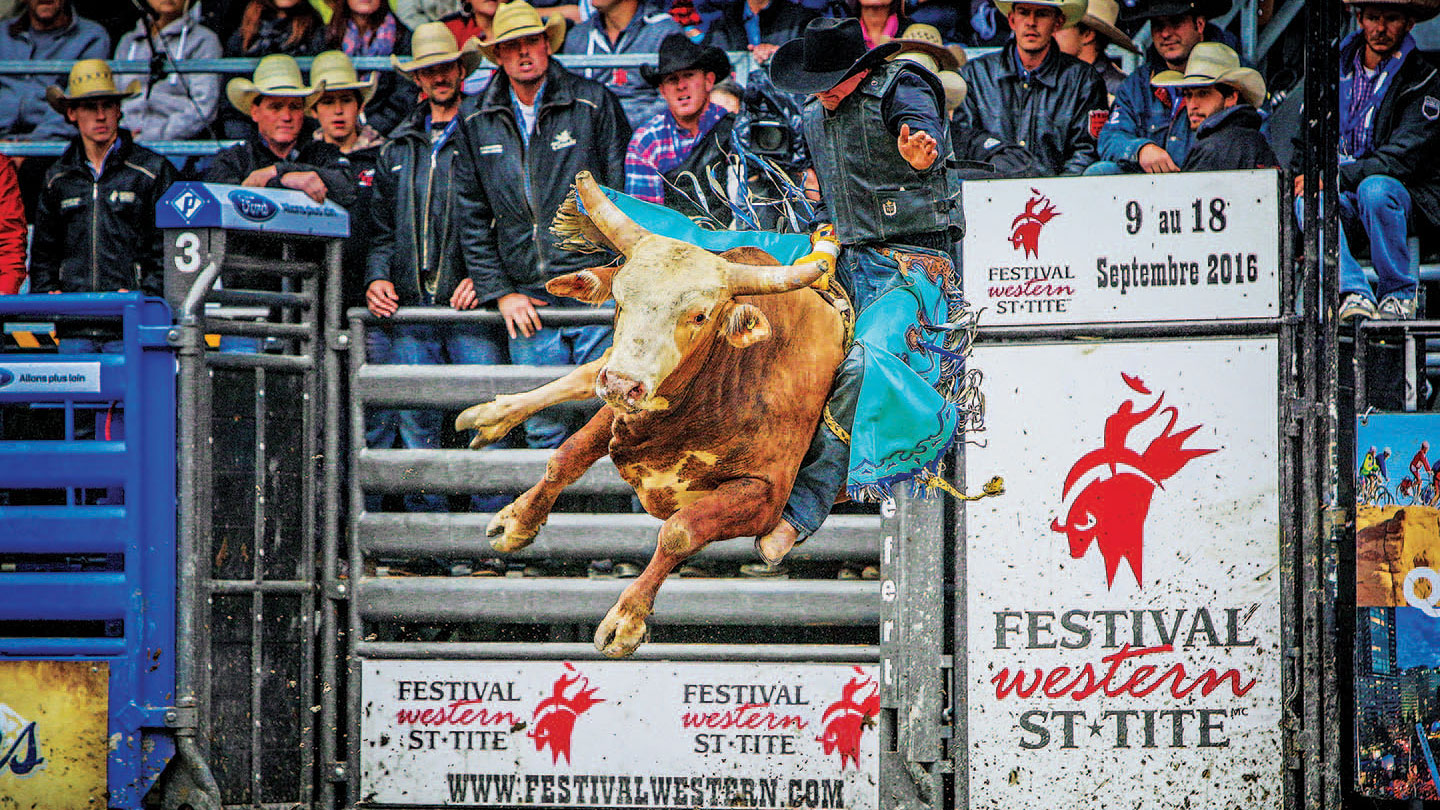
Head North of the Border to One of the Best Outdoor Rodeos in North America
Festival Western de Saint-Tite (September 9–18, 2016), Saint-Tite, Quebec, Canada
Known as the “Leathertown of Quebec,” the tiny French-speaking village of Saint-Tite, located about a two-hour drive north of Montreal, discovered its raison d’être in 1930 when local businessmen invited G.A. Boulet to establish a men’s dress shoe factory there. By the end of the decade, as World War II loomed, production switched to shoes and boots for the Canadian Armed Forces. And by the 1960s, G.A.’s sons had a new vision for their father’s company: cowboy boots.
Because Boulet Boots was the first Canadian company to manufacture Western-style boots, the market was wide open. But the boys knew they needed a marketing plan to get the word out. What to do? Host a rodeo.
The company held its first “rodeo day” in 1967 to promote its new boot line. Since then, the Festival Western de Saint-Tite and its accompanying rodeo have grown into a 10-day event drawing International Professional Rodeo Association contestants from across Canada, North America, and Australia and enticing visitors from as far away as France.
Every September, the streets of Saint-Tite teem with more than 600,000 visitors. Festival-goers walk in the middle of the roads, shopping at vendor booths and eating Québécoise foods such as crêpes and poutine, a delicious concoction of gravy- and cheese curd-laden French fries. Mixed into the crowds are rodeo contestants who ride their horses to the arena to compete. Since the town is too small to offer traditional lodging for such a mass influx of people, everyone is camped out together in RVs and horse trailers in fields and on residential lawns.
A French-speaking province may seem like an unlikely rodeo venue, but it turns out that the people of Quebec are boisterous fans by nature — providing a perfect audience for the rough-and-tumble sport. As rodeo clown Cliff “Hollywood” Harris told the Montreal Gazette, “St-Tite is, bar none, the most exciting rodeo in [North America]. It’s electric on a Wednesday night. In Texas and Oklahoma, people see so many rodeos it just sort of becomes normal. But here, they go crazy for them.”
— Lindsay Whelchel
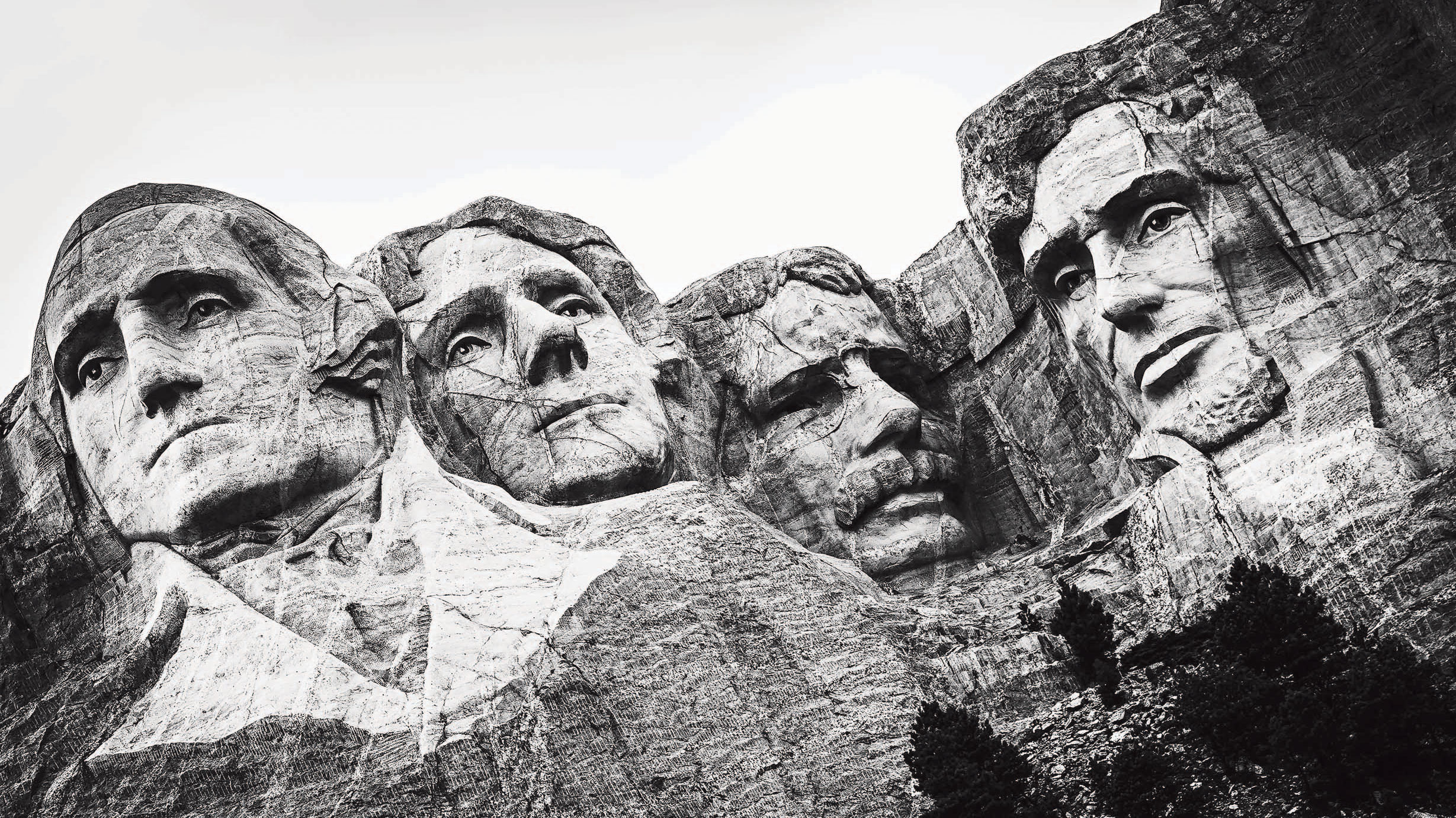
Ride the Black Hills of Dakota on a Harley
Sturgis Motorcycle Rally (August 8–14, 2016), Deadwood to Custer State Park, South Dakota
You don’t need a Harley-Davidson to experience the hauntingly beautiful back highways of South Dakota’s Black Hills country. But the land of Custer, Hickok, and the annual Sturgis Motorcycle Rally just isn’t quite the same in a Corolla.
“In the Black Hills you will see things that teach you that west isn’t a direction but a lifestyle,” Gary McKechnie writes in Great American Motorcycle Tours. “There are towering structures and wide open spaces, caves and fossil beds, natural beauty, and a desire to preserve it. And when you travel during shoulder season (May or September), the roads are wide open and free.”
Pick up a hog from nationwide rental company EagleRider or local Black Hills Harley-Davidson. Then start in the fabled gold rush town of Deadwood — with an optional warm-up ride (you’ll need it) to nearby Sturgis and its Motorcycle Hall of Fame Museum. Then cruise south on U.S. Route 385 to the main event along famed Iron Mountain Road (U.S. Route 16A), with its wooden pigtail bridges, one-lane tunnels, and innumerable switchbacks deliberately built into this challenging but spectacular route. The reason: to force you to slow down and admire all the surrounding beauty — and occasional buffalo herd standing in the middle of the road.
Mount Rushmore. Wind Cave National Park. Crazy Horse Memorial. They’re all in the neighborhood. Along with Custer State Park and its aptly named Wildlife Loop Road where the “chances are you’ll spy enough wildlife to fill an ark,” notes McKechnie, “while riding a road that twists like a knot.”
— Jordan Rane
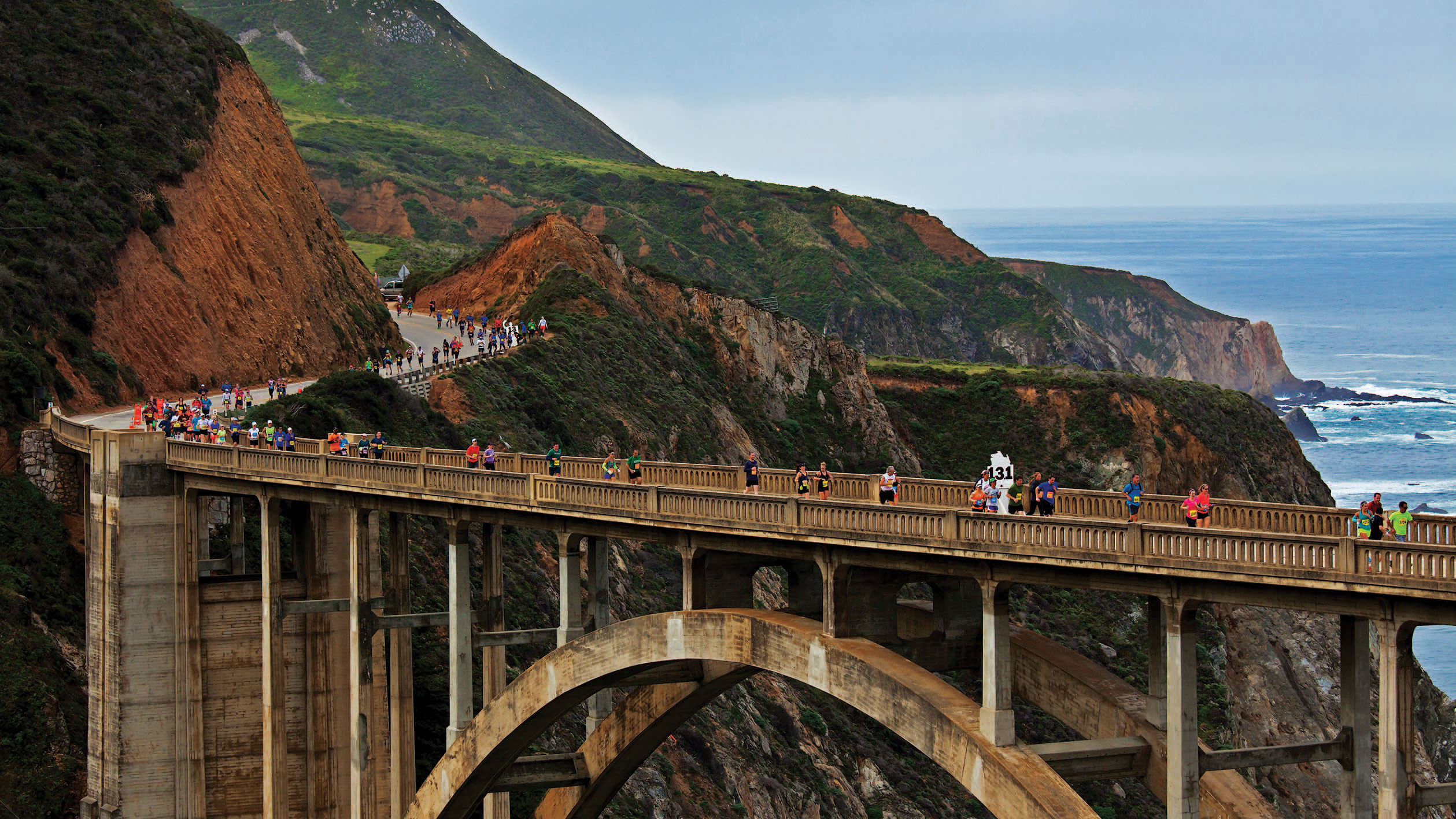
Run a Magnificent Marathon — or Two
St. George Marathon (October 1, 2016), St. George, Utah;
Big Sur International Marathon (April 30, 2017), Big Sur, California
Running a marathon. If you haven’t checked this 26.2-mile crowning achievement off your bucket list, you’re not in the minority quite yet. But the numbers are loping in that general direction.
According to Running USA, more than 1,200 marathon events are now held in the U.S. with over 550,000 finishers. Flash back to 1976 — 25,000 finishers at a handful of events — and clearly we’ve come a long way. With so many marathon sites to choose from, where should you fasten your next (perhaps first) bib? Our dual nominees are in two very different, equally stunning spots:
Southwestern Utah’s St. George Marathon is ranked by Runner’s World as one of only four “Marathons to Build a Vacation Around.” Celebrating its 40th season this year, it has a reputation for being among the fastest courses on the USA Track & Field certified list. More important, it’s one of the prettiest — starting high up in the Pine Valley Mountains (5,240 feet) and coasting down through dramatic desert valleys and canyons along Utah State Route 18 to the quaint town of St. George (2,680 feet). When you’re here, side trips to Zion National Park (less than an hour away) and the quiet North Rim of the Grand Canyon (about a 150-mile drive) are added bonuses.
California’s annual Big Sur International Marathon offers one of the most breathless challenges anywhere — undulating along a world-famous slice of dramatic Pacific Coast on the nation’s first nationally designated Scenic Highway. Stunning vistas, marine wildlife spotting, and a knee-wobbling Bixby Bridge crossing are highlights along this hilly State Route 1 course from Big Sur Village to Carmel-by-the-Sea. Registration for the event, limited to 4,500 qualified entrants through random drawings, begins in mid-July.
— J.R.
See the rest of our 2016 Adventure Bucket List.
From the May/June 2016 issue.



